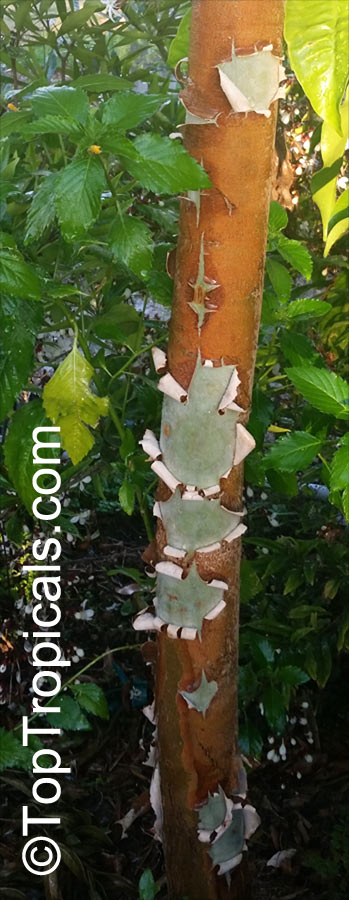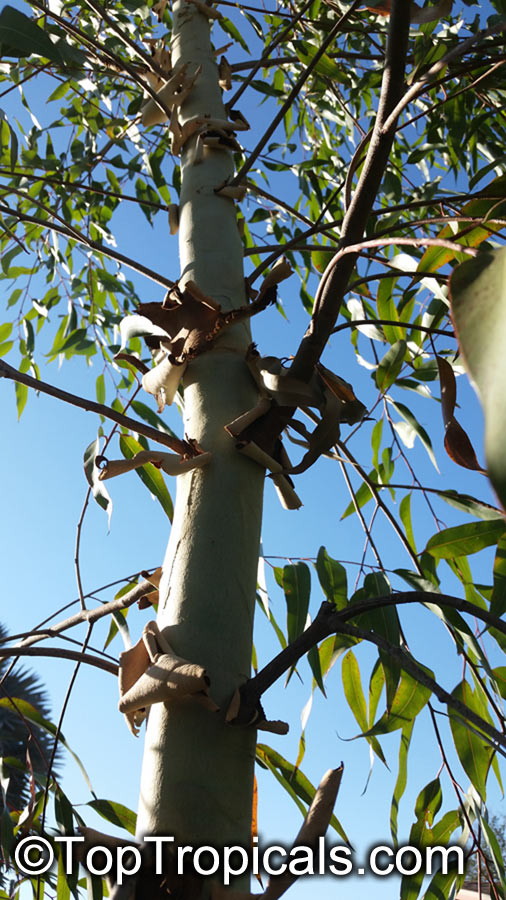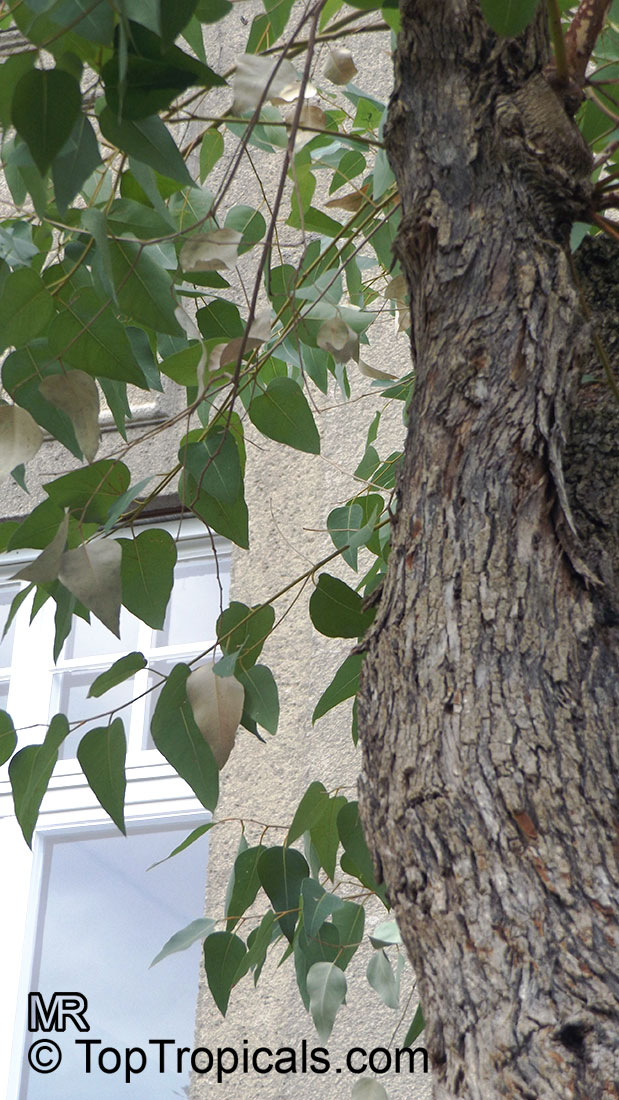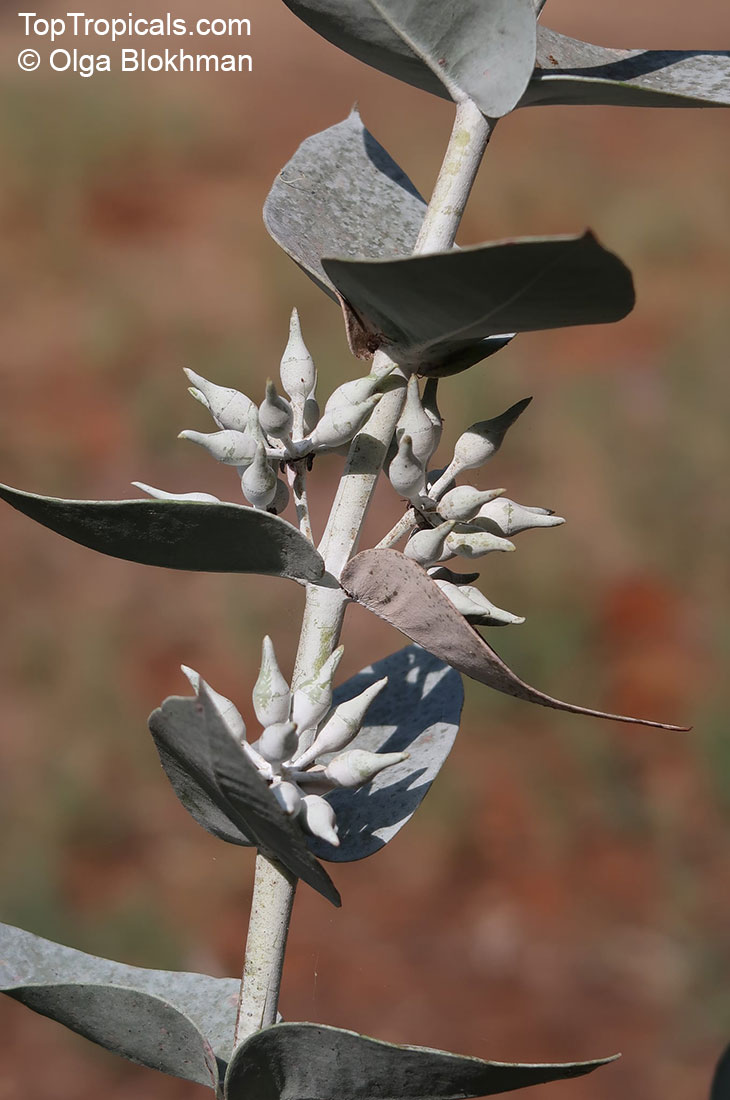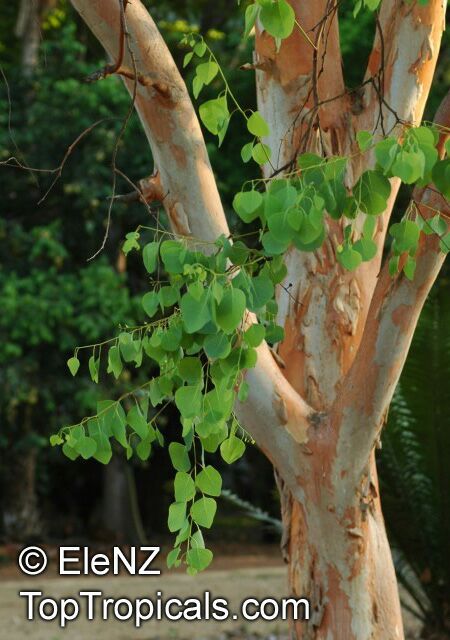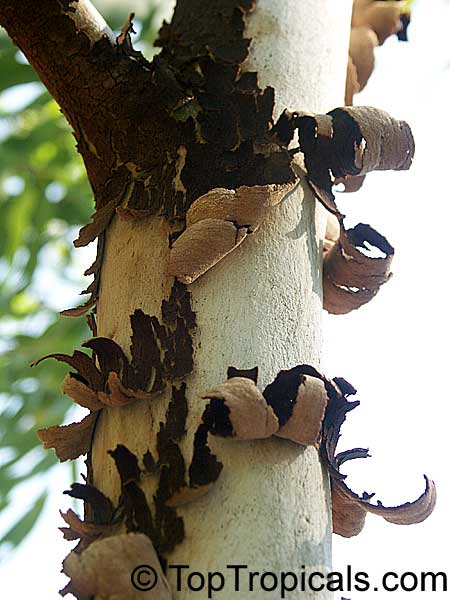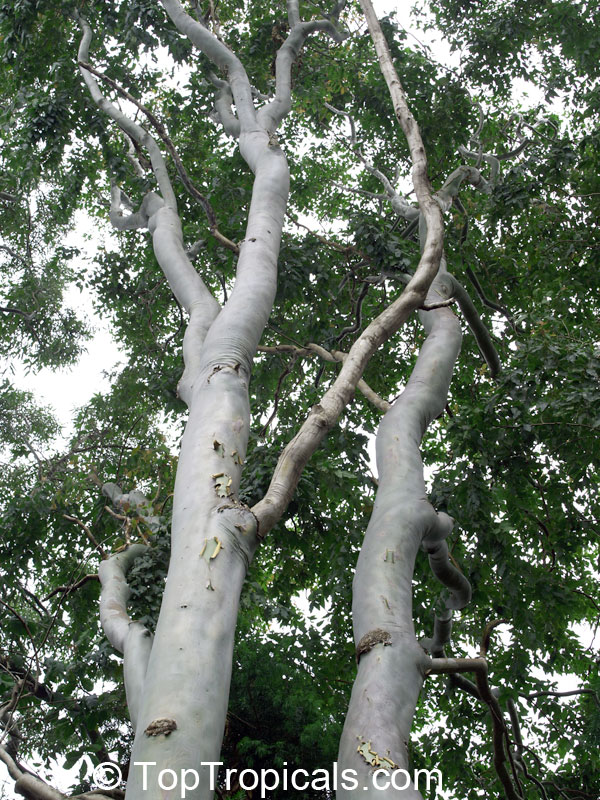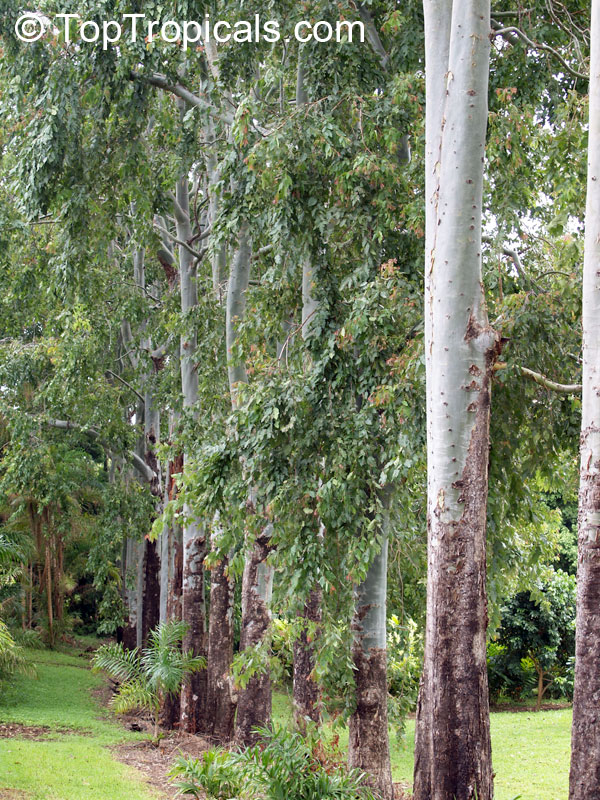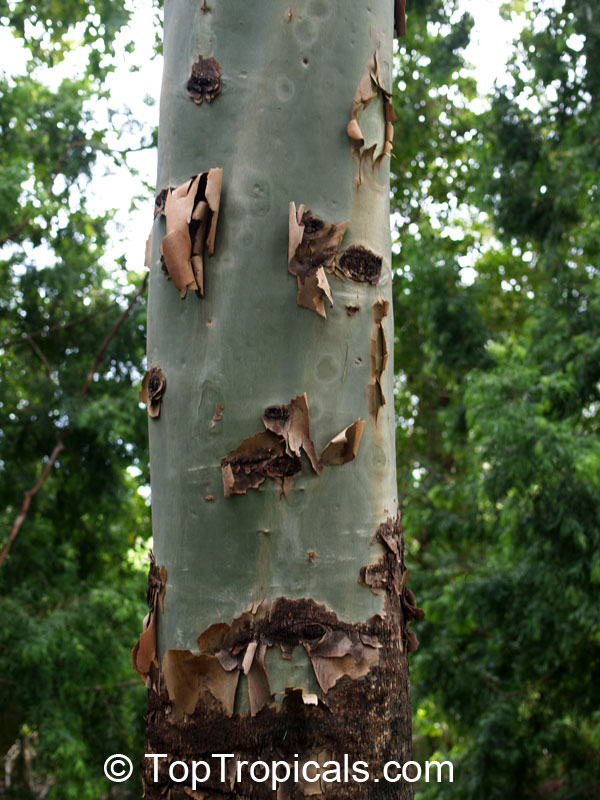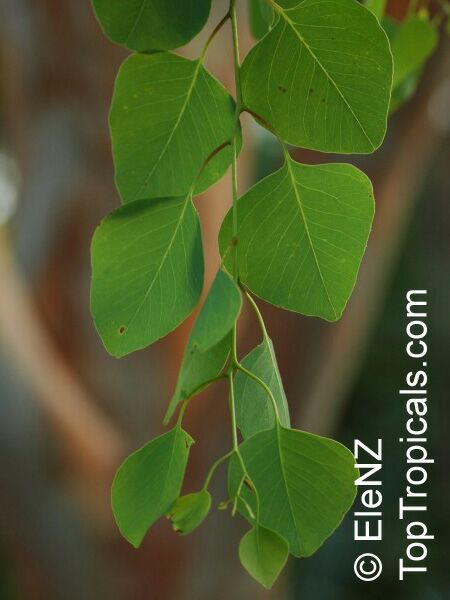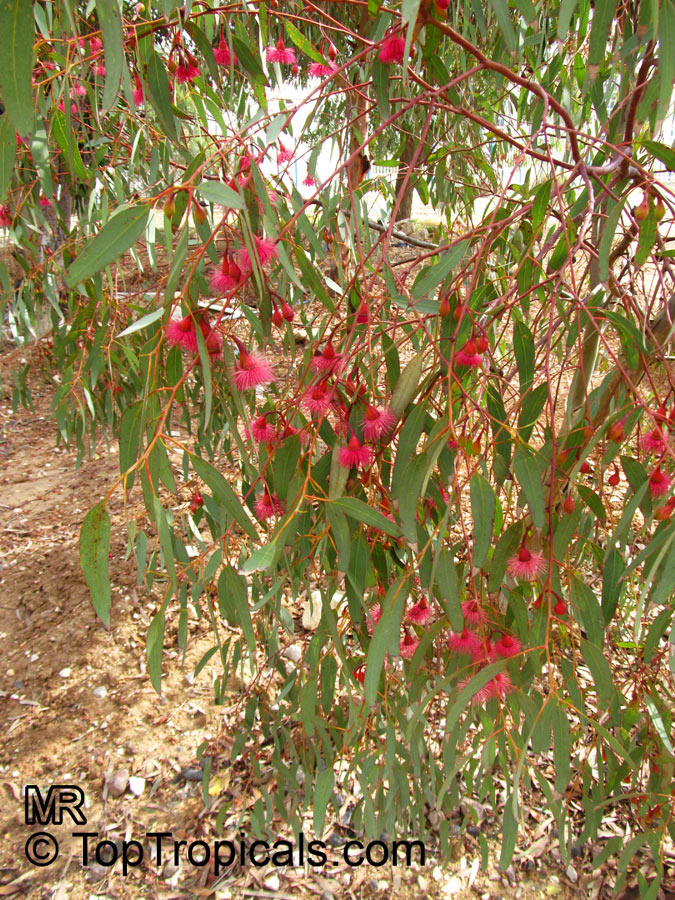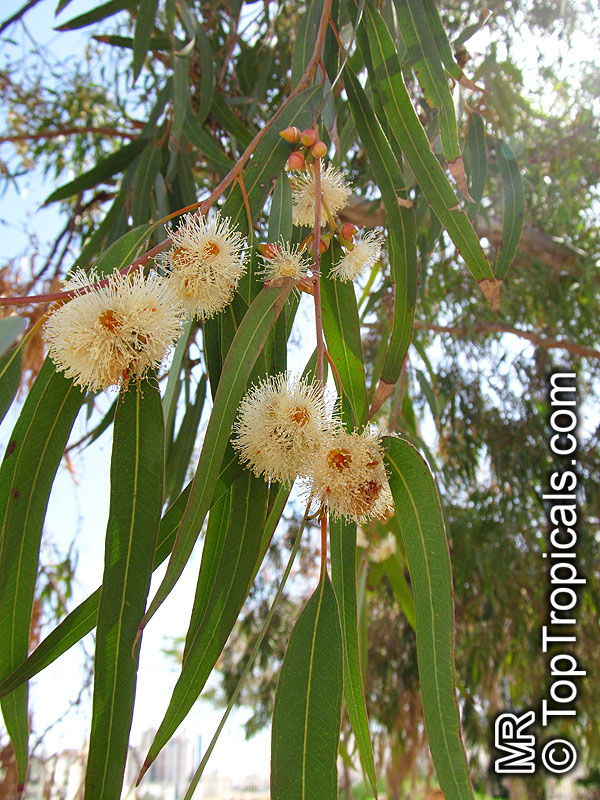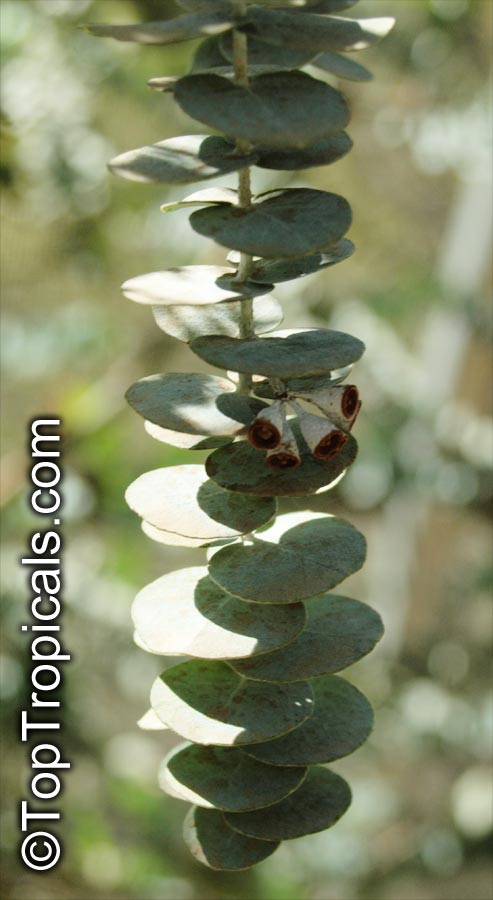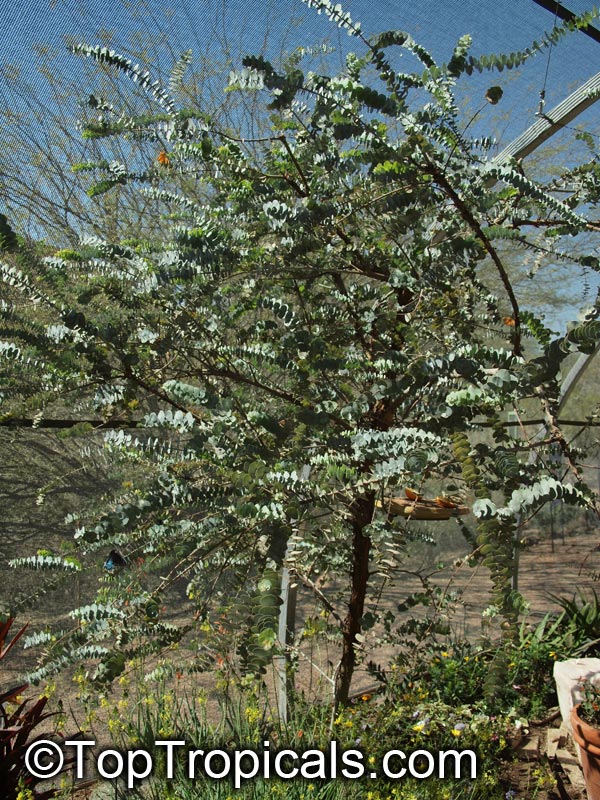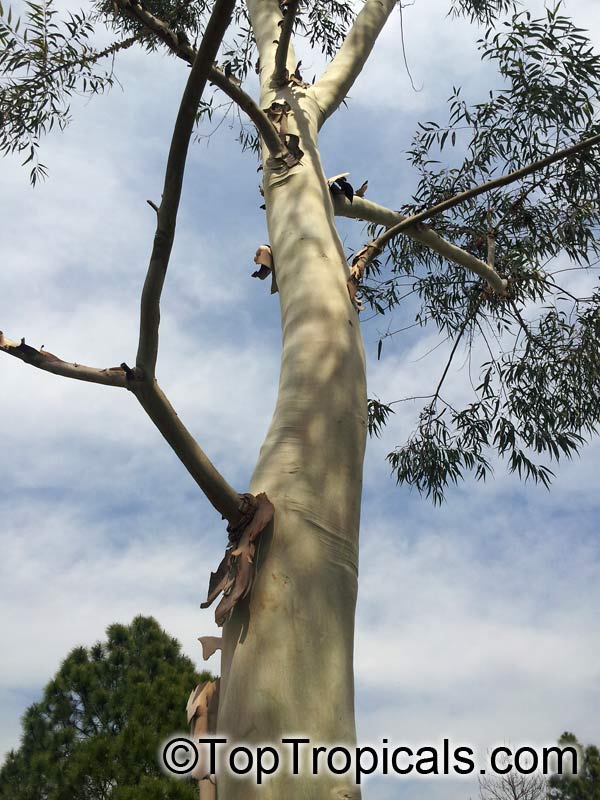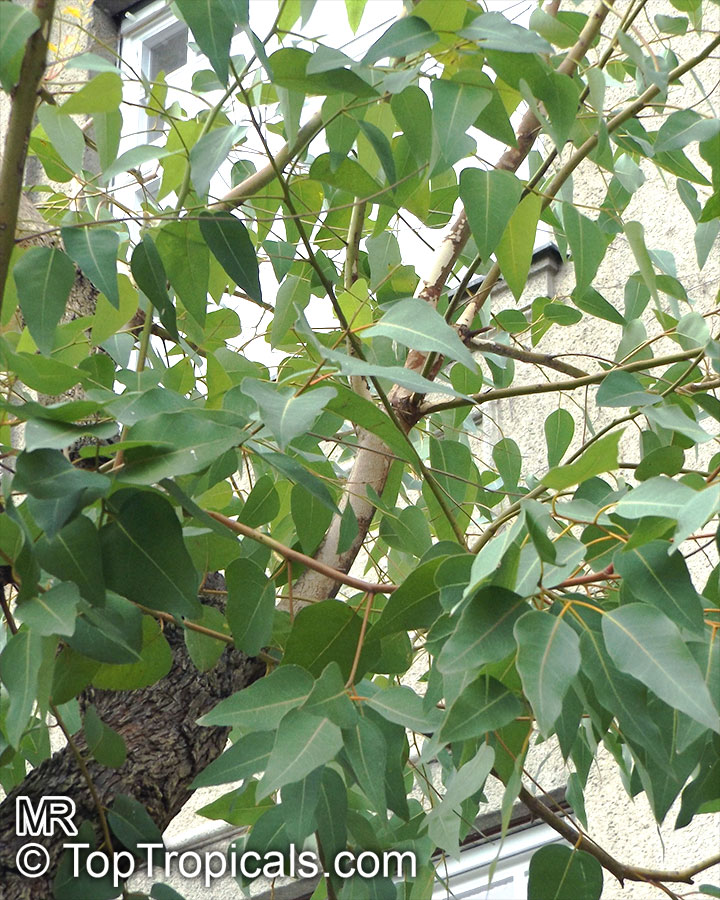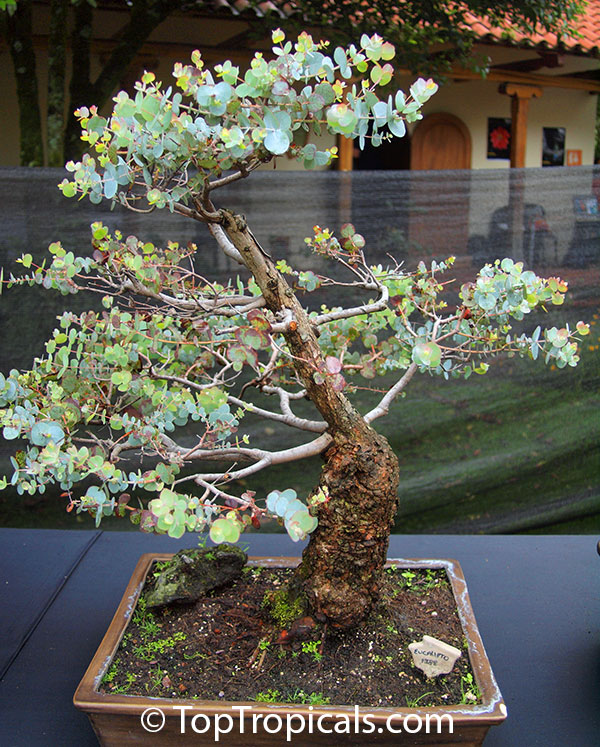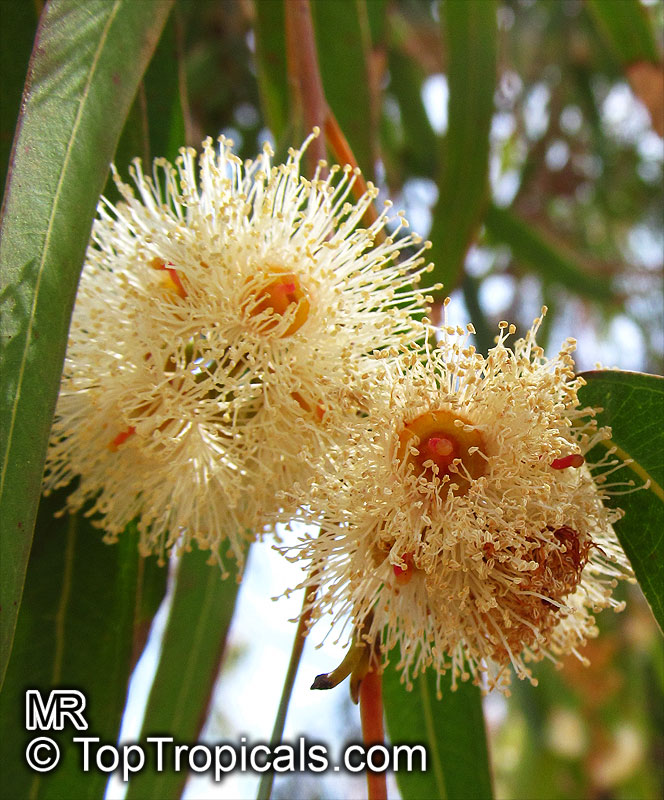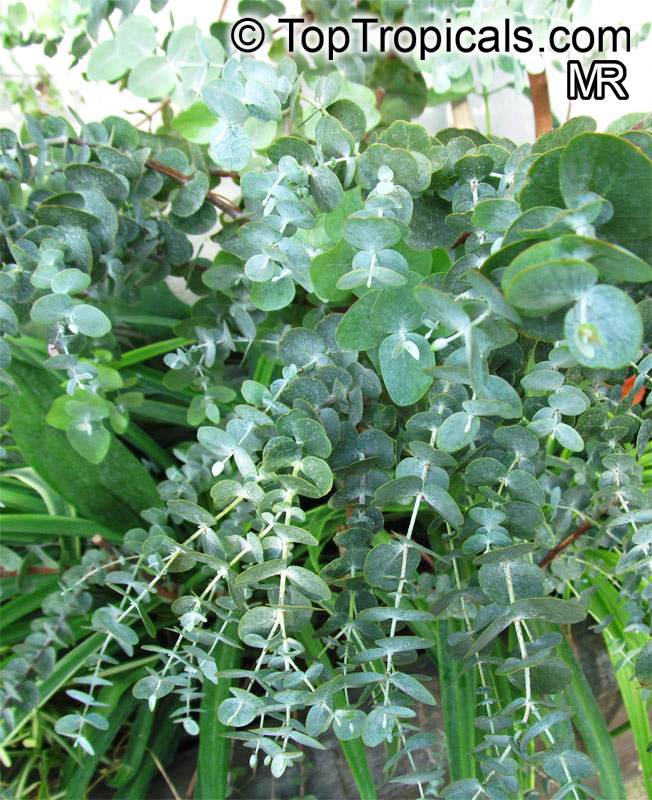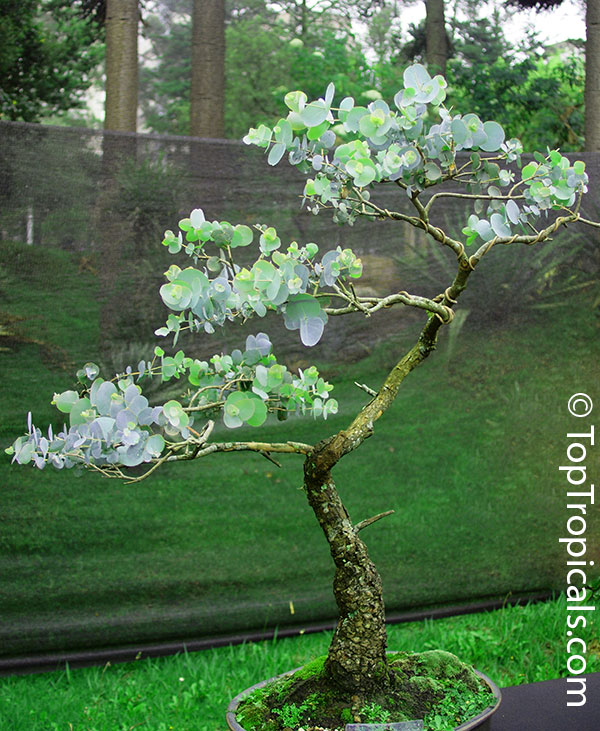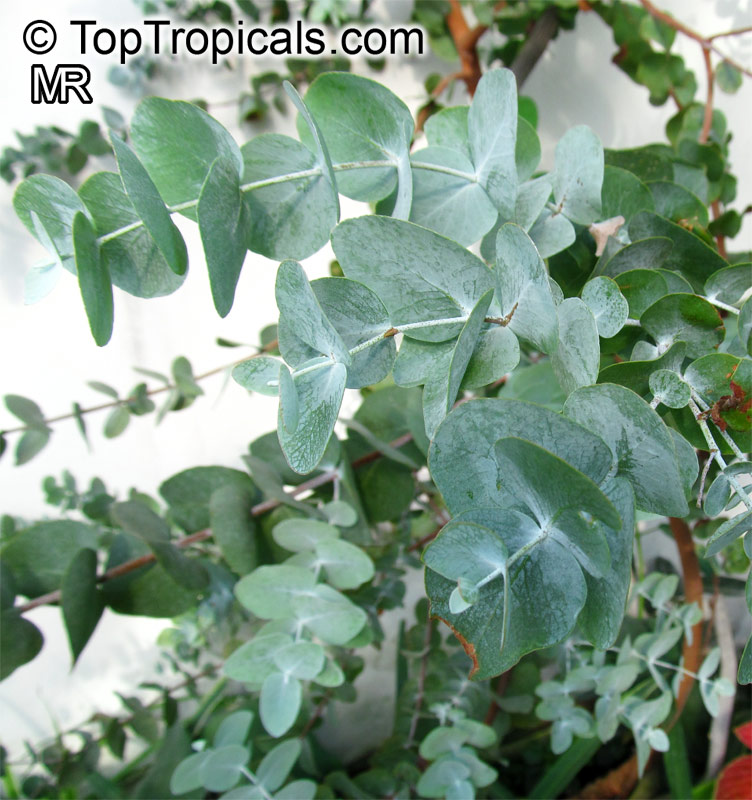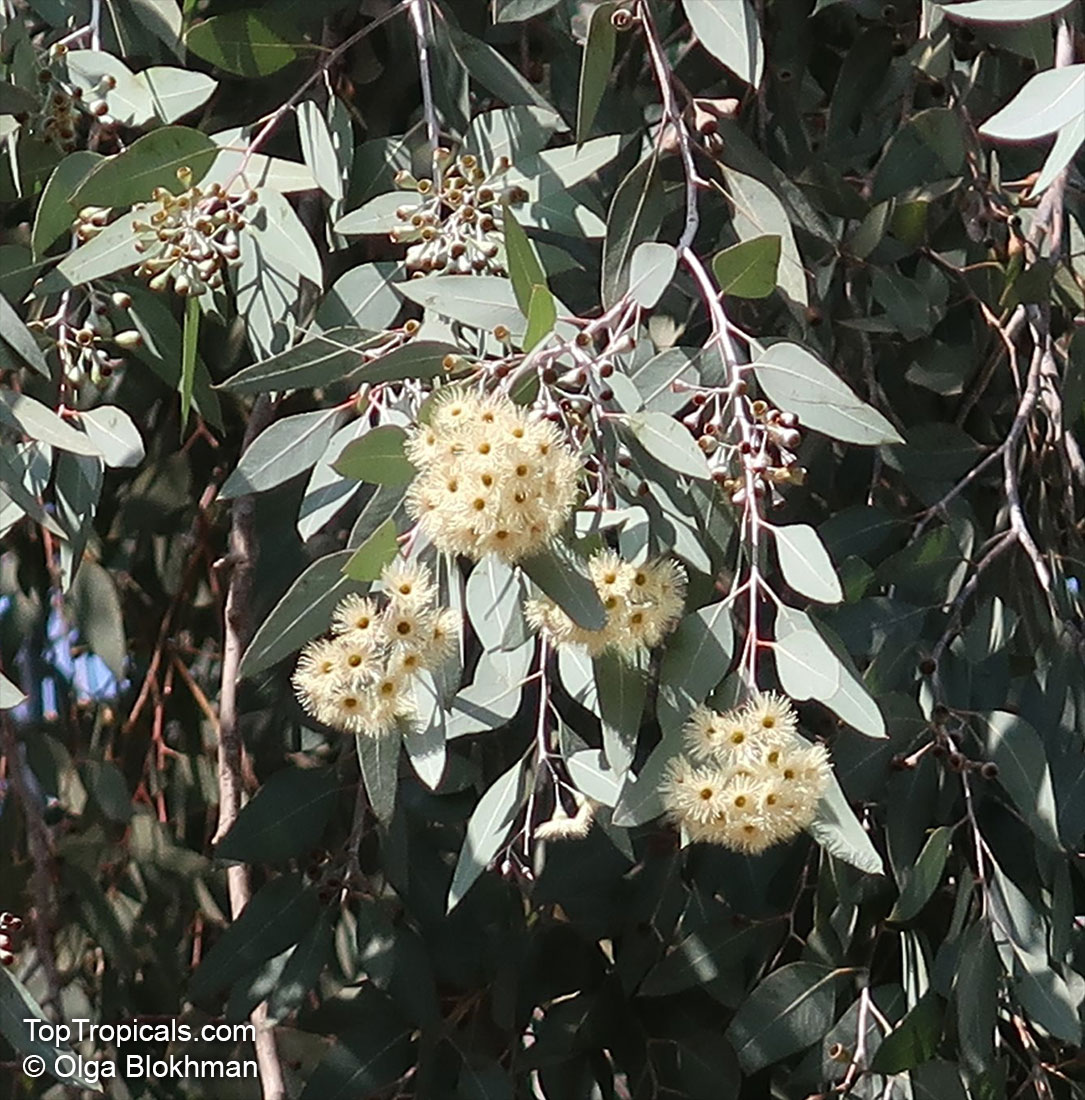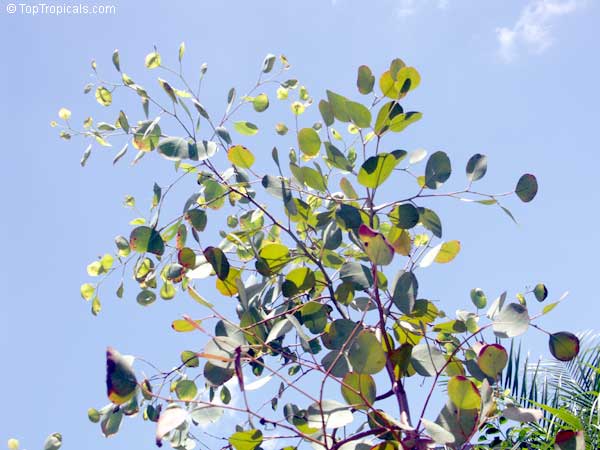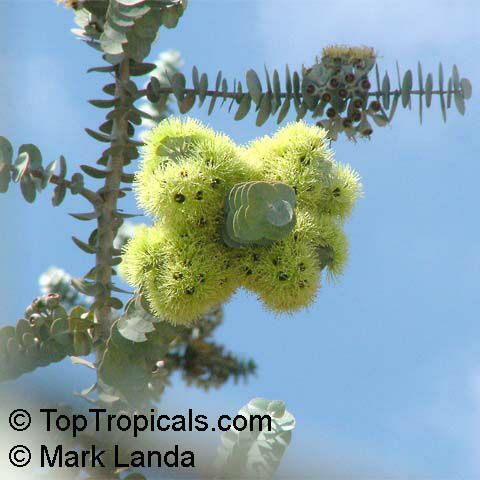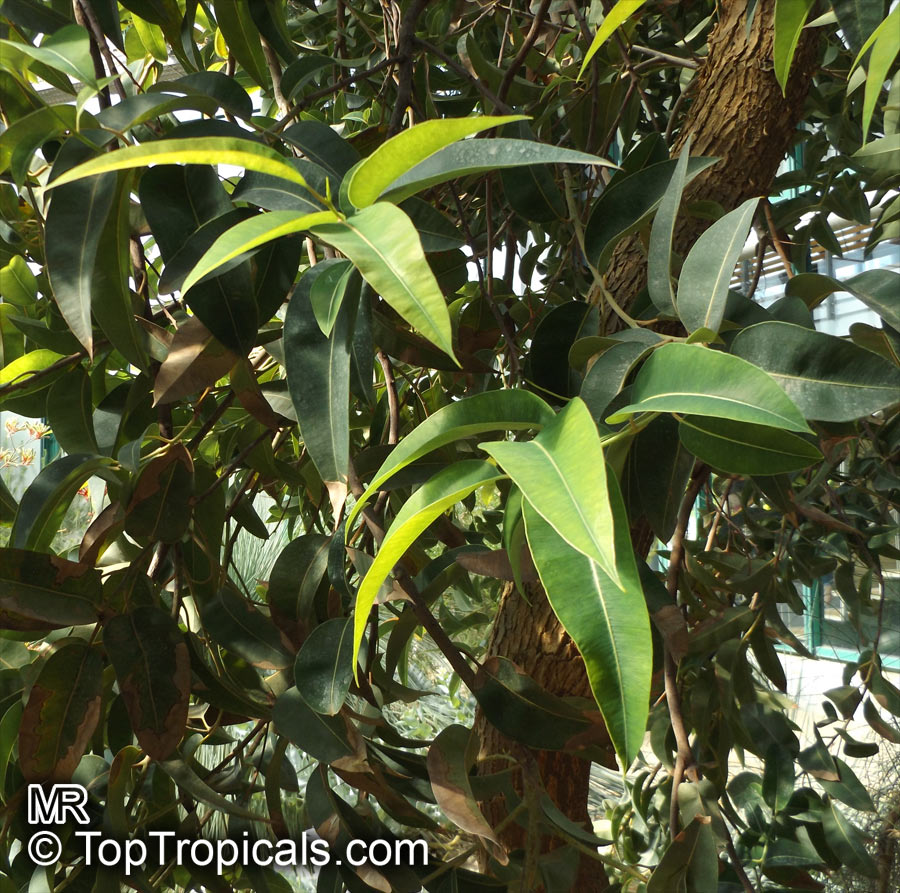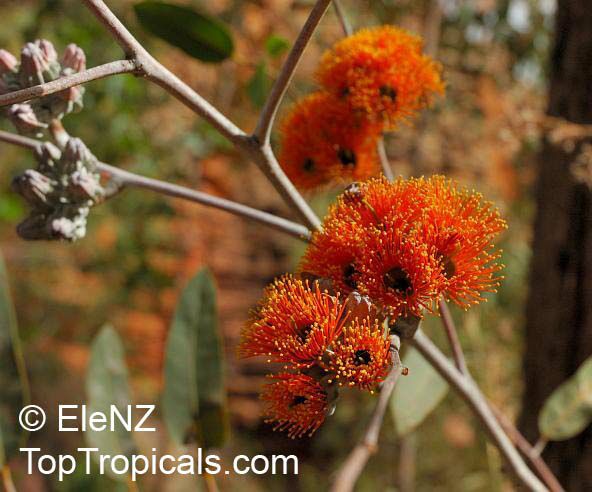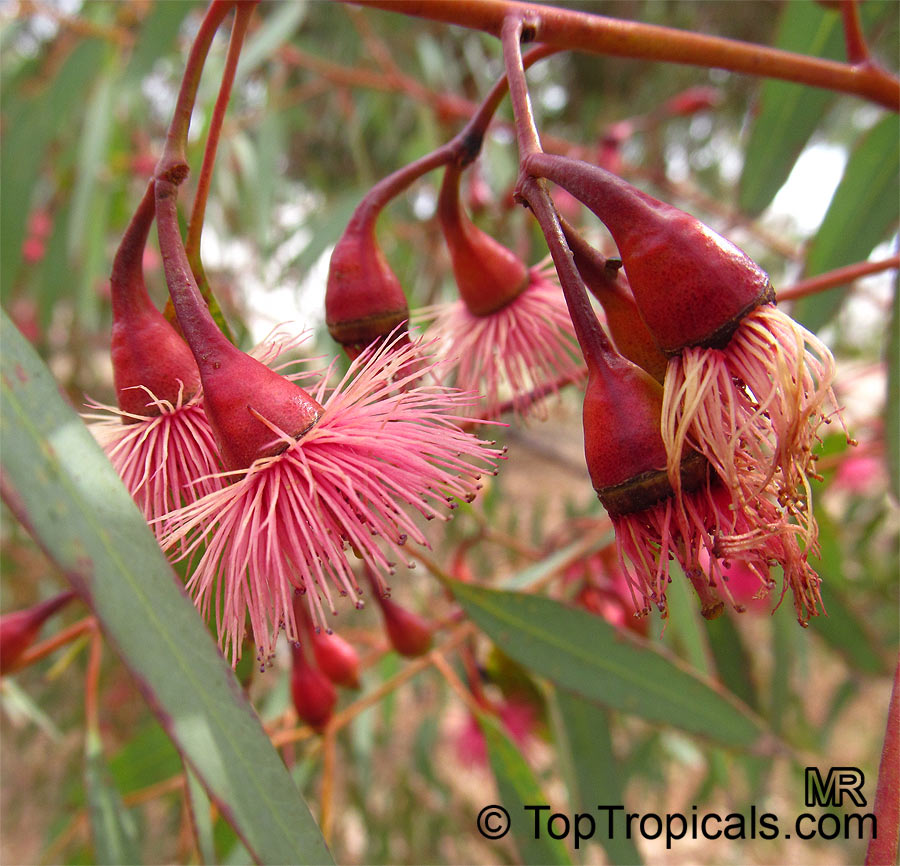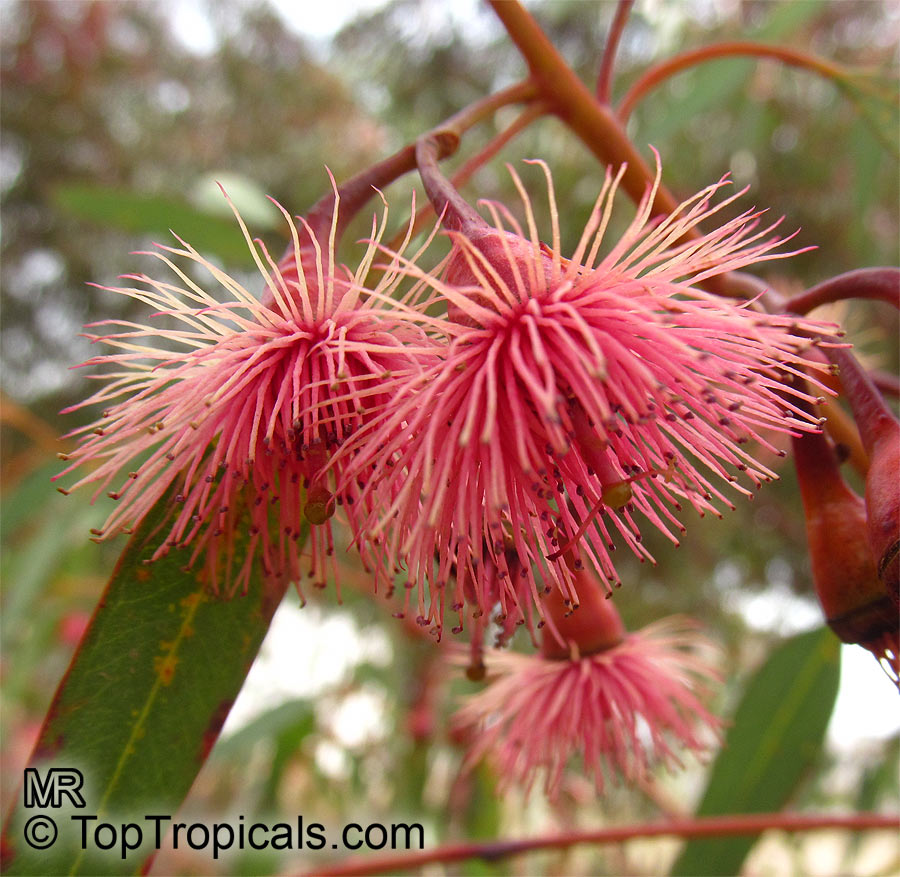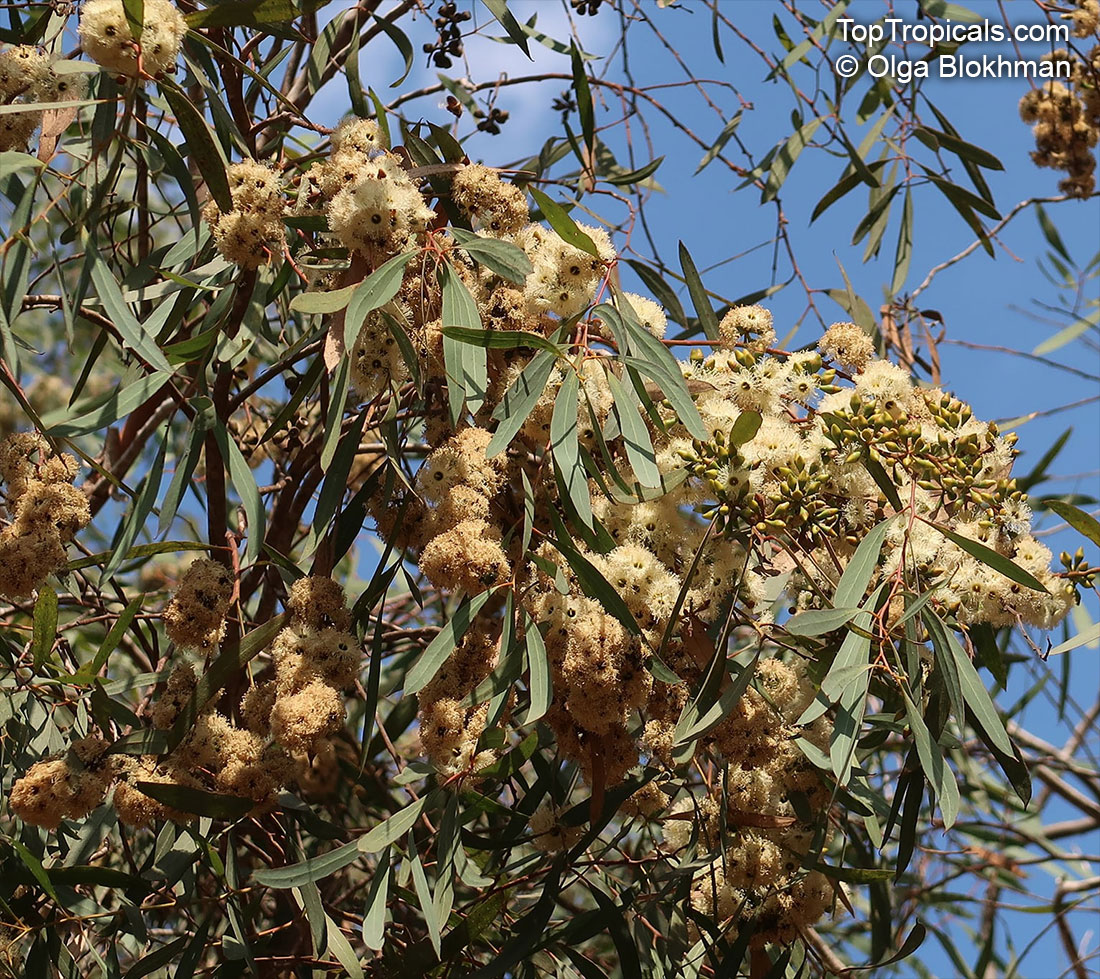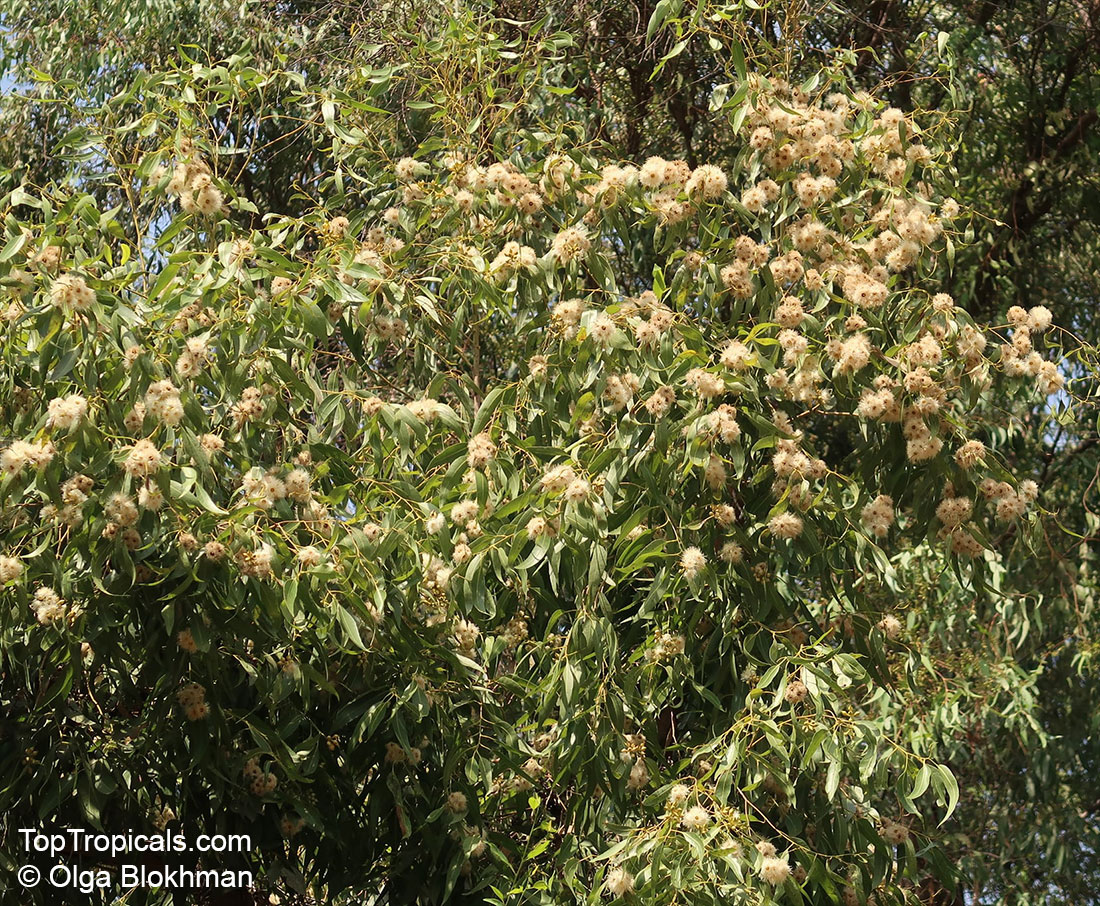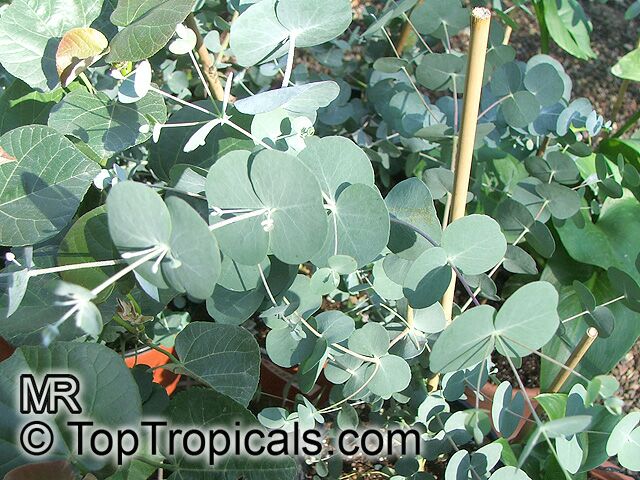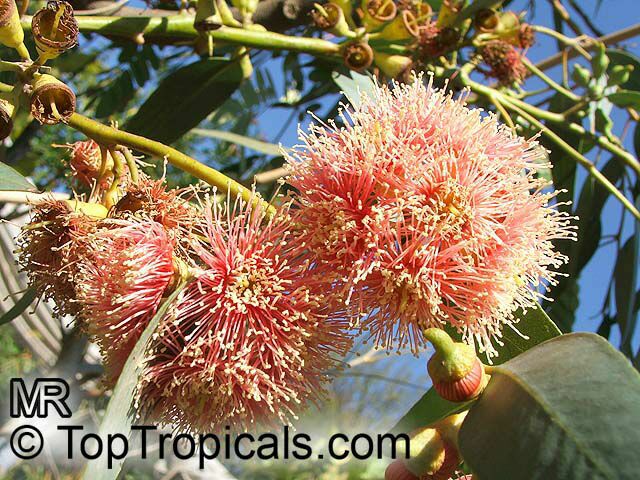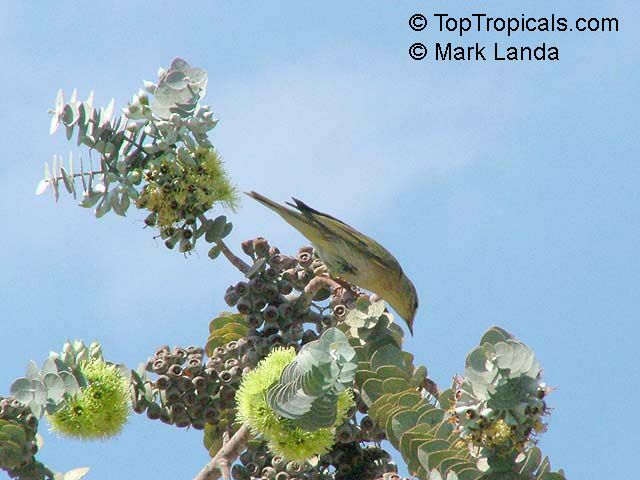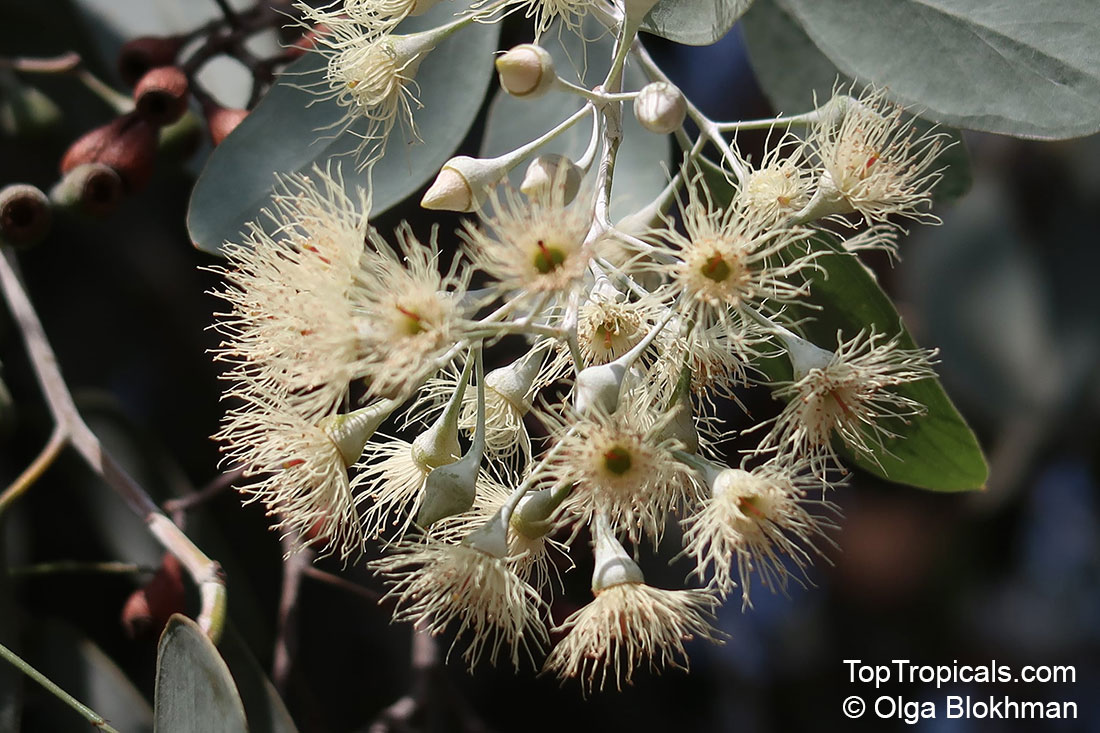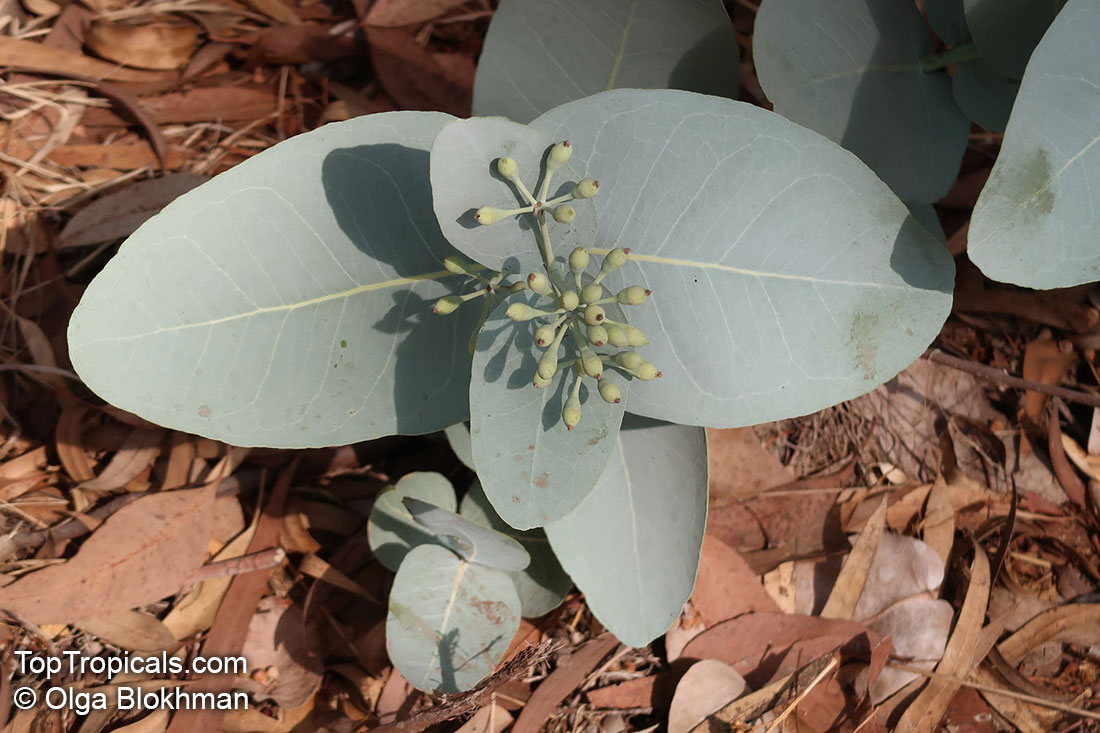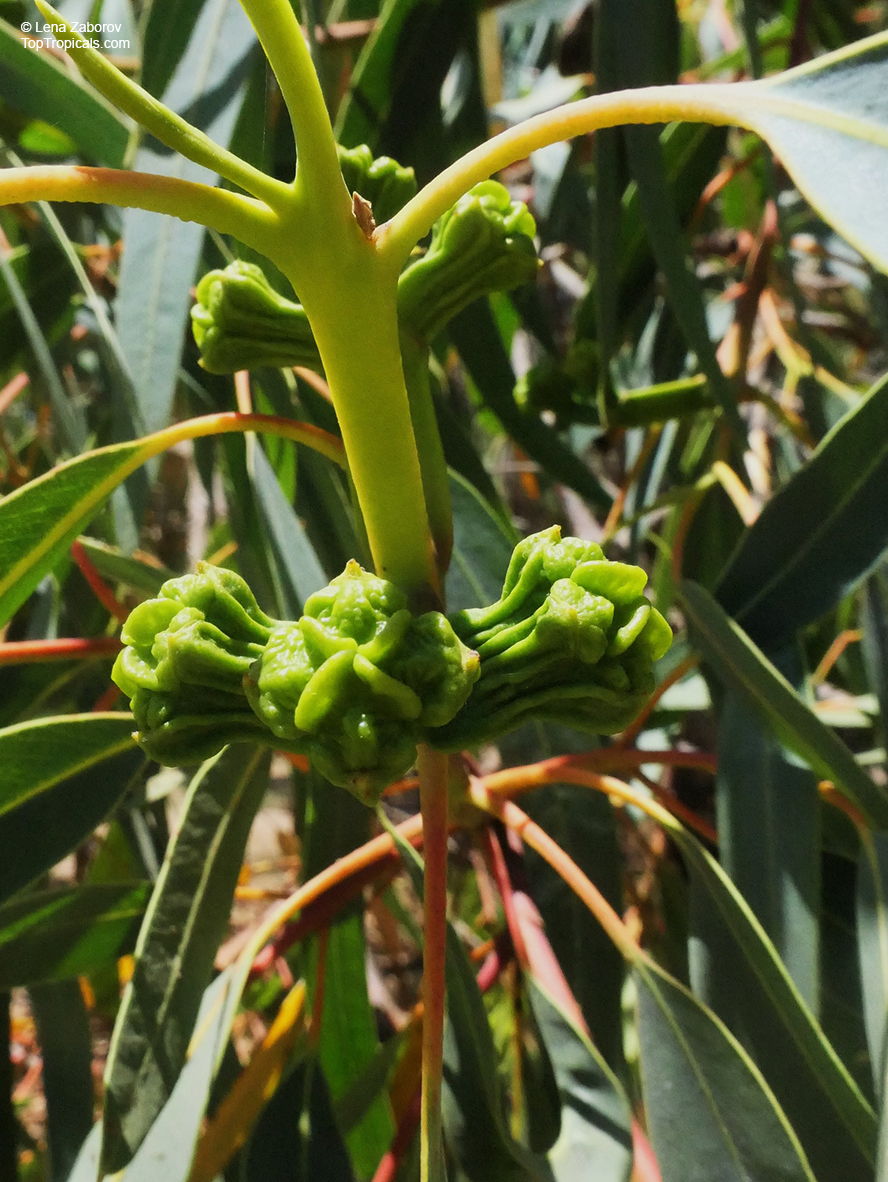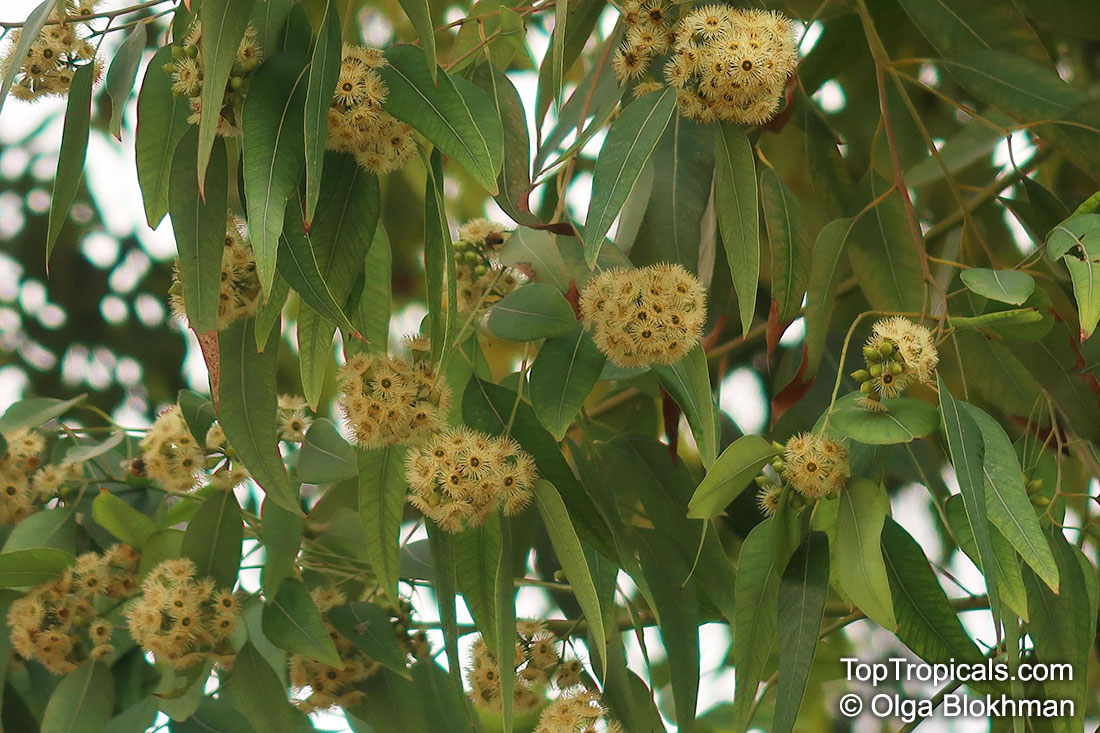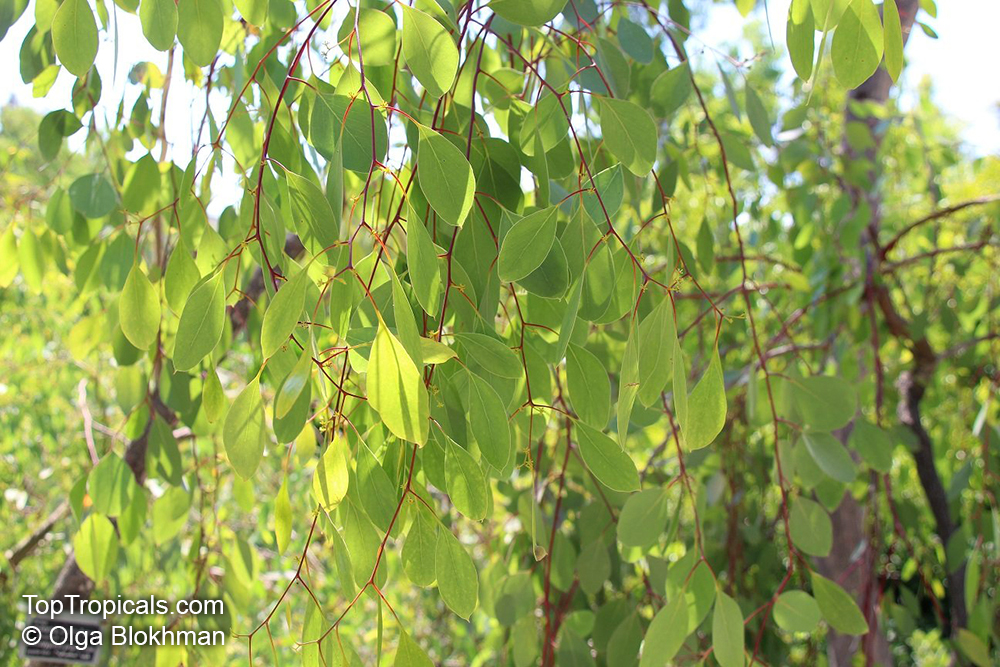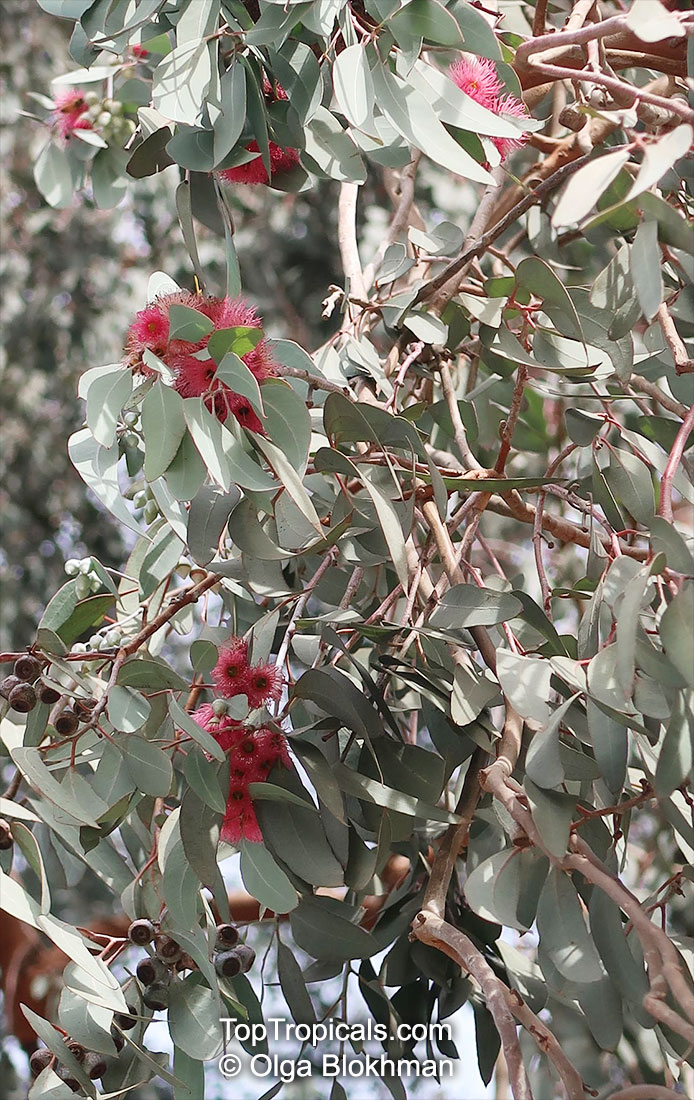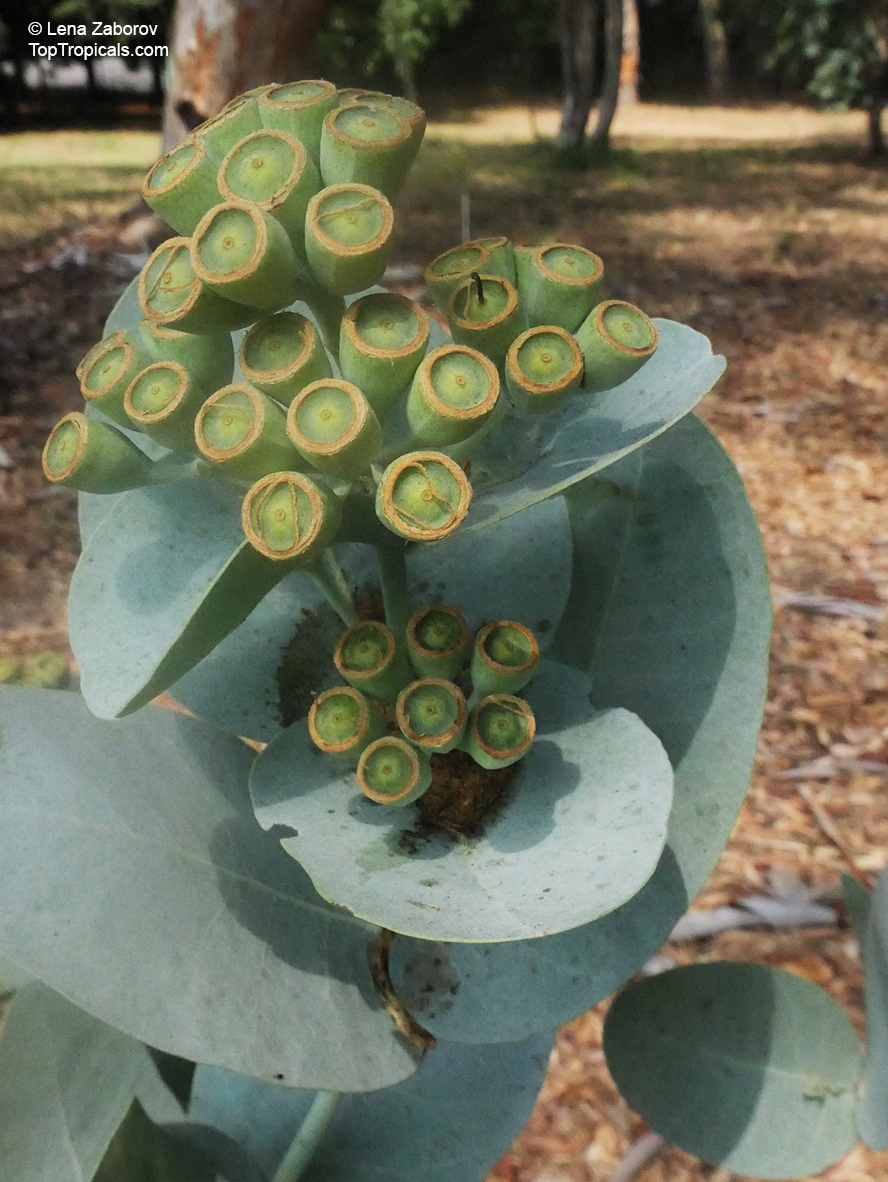Eucalyptus sp. (Eucalyptus)
Top Tropicals Plant Encyclopedia
Botanical name: Eucalyptus sp.
Common name: Eucalyptus
Family: Myrtaceae
Origin: Australia, Indonesia, New Guinea














Eucalyptus is an enormous and fascinating genus that accounts for more than two-thirds of Australia's vegetation. The only major environment where they are absent is rainforest. There are about 12 species which occur naturally outside of Australia, while around 700 are Australian endemics. Only 2 species are not found in Australia. One of these, Eucalyptus deglupta, is the only eucalyptus to be found growing naturally in the northern hemisphere, occurring in the southern Phillipines, New Guinea and Indonesia.
Essential oils from the leaves of Eucalyptus have attracted interest since the earliest days of settlement in Australia. One of the first articles of export from the newly established colony of New South Wales in 1788 was a quarter of a gallon of an essential oil steam-distilled from the leaves of Eucalyptus piperita growing on the shores of Port Jackson. Eucalyptus therapeutic properties attracted interest of the botanist Baron Ferdinand von Mueller so he prompted a Victorian pharmacist colleague, Joseph Bosisto, to investigate the commercial production of its essential oil. In 1852 operations were started. This was the beginning of the Australian essential oil industry. By 1900 the industry was firmly established, and for the next fifty years Australia remained the world's largest supplier of eucalyptus oil.
Most species of Eucalyptus go through a change from round and stem-clasping juvenile foliage to long and willowy mature foliage. Some people think of Eucalyptus as those large trees in Australia with willowy leaves that Koalas eat, and others imagine cute little silvery stems used in floral bouquets. Indeed, they are both Eucalyptus: the smaller stems and leaves represent the young plants, and the long willowy leaves come from mature trees.
Many eucalyptus species from desert or subtropical regions have showy flowers, those are usually a bit more cold sensitive. Very often Eucalyptus is regarded as not being hardy outside of the subtropics, which discourages people from planting them in cooler areas. However, most of the species are cold hardy. Practically all of them can withstand some frost. A large number of species are very hardy, withstanding hard freeze for many hours. Some of them can be grown in real cold areas with snowy winters (USDA zone 8 or colder). Eucalyptus hardiness makes this tree very desirable for exotic gardeners in different types of climates.
Besides cold hardiness, these trees have many other advantages: they help to control aphids and other insects, most of them will grow rapidly even in poor soil (as fast as 12 ft per year), and they are very attractive. Eucalyptus foliage is excellent for cut foliage in floral arrangements.
Eucalyptus is much faster growing than most other trees in cultivation and once planted in the ground, can be expected to grow 6 - 12 ft each year, as long as the young tree is healthy and not root-bounded (this is why it is recommended to go with a smaller size eucalyptus plant - it will grow much faster and better than its bigger root-bounded sister). They never go dormant and are able to grow whenever they have access to water and a little warmth, regardless of time of the year. They do better in cultivation than they in their natural habitat in Australia as most gardens and landscapes offer good soil, and freedom from competition - neither of which they usually get in their homeland. A good heavy mulch around the base of the tree will be a big plus.
Similar plants: Eucalyptus sp. (Eucalyptus)
- Corymbia setosa (Rough-leaved Bloodwood)
- Corymbia terminalis (Bloodwood)
- Corymbia torelliana (Cadaga)
- Eucalyptus albopurpurea (Purple-flowered Mallee Box)
- Eucalyptus calycogona (Gooseberry Mallee)
- Eucalyptus camaldulensis (River Red Gum)
- Eucalyptus cinerea (Argyle Apple)
- Eucalyptus citriodora (Lemon Eucalyptus)
- Eucalyptus deglupta (Rainbow Eucalyptus)
- Eucalyptus erythrocorys (Red-cap Gum )
